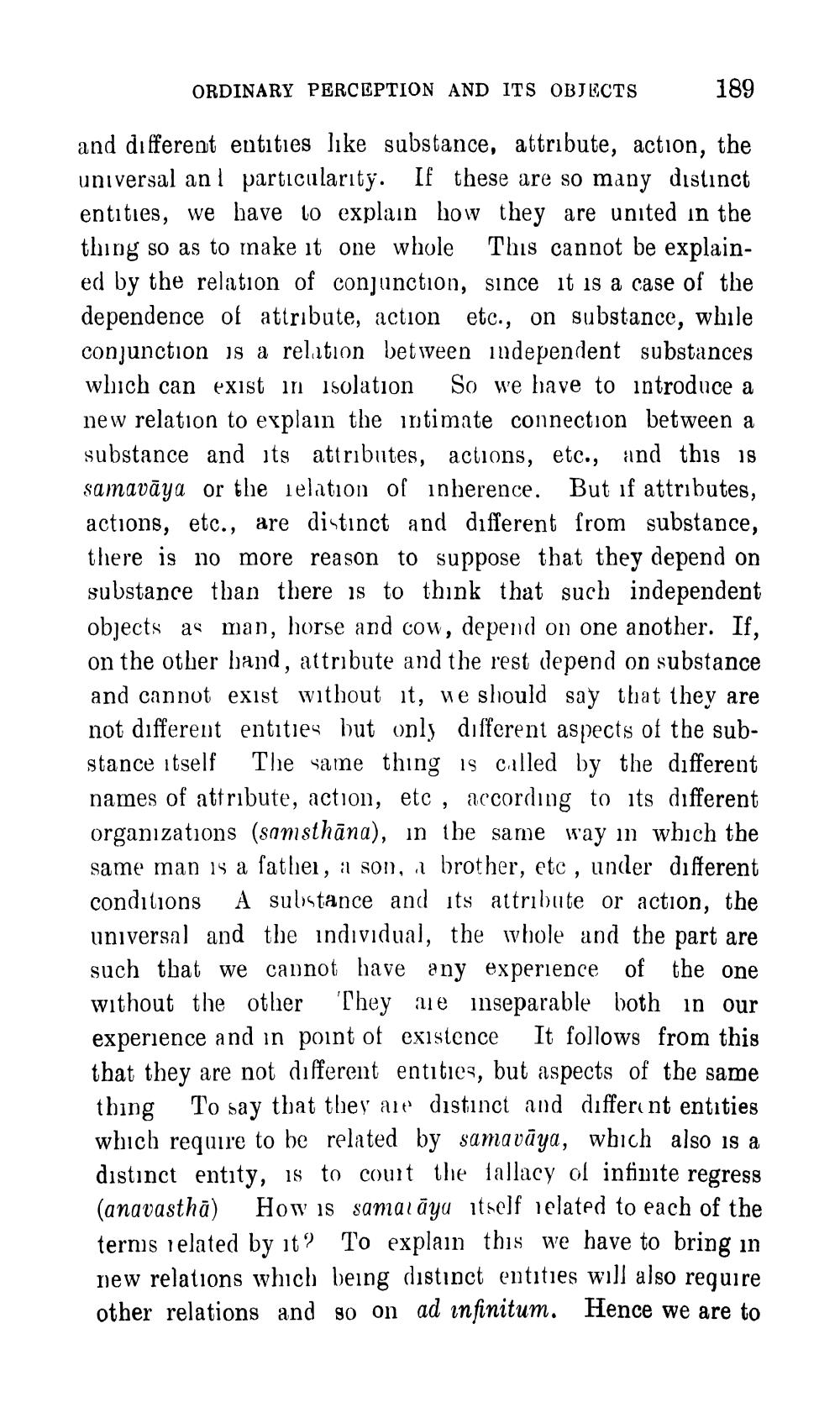________________
ORDINARY PERCEPTION AND ITS OBJECTS
189
and different entities like substance, attribute, action, the universal and particularity. If these are so many distinct entities, we have to explain how they are united in the thing so as to make it one whole This cannot be explained by the relation of conjunction, since it is a case of the dependence of attribute, action etc., on substance, while conjunction is a relation between independent substances which can exist in isolation So we have to introduce a new relation to explain the intimate connection between a substance and its attributes, actions, etc., and this is samavāya or the relation of inherence. But if attributes, actions, etc., are distinct and different from substance, there is no more reason to suppose that they depend on substance than there is to think that such independent objects as man, horse and cow, depend on one another. If, on the other hand, attribute and the rest depend on substance and cannot exist without it, we should say that they are not different entities but only different aspects of the substance itself The same thing is called by the different names of attribute, action, etc, according to its different organizations (samsthāna), in the same way in which the same man is a father, il son, it brother, etc, under different conditions A substance and its attribute or action, the universal and the individual, the whole and the part are such that we cannot have any experience of the one without the other They are inseparable both in our experience and in point of existence It follows from this that they are not different entities, but aspects of the same thing To say that they are distinct and differı nt entities which require to be related by samavāya, which also is a distinct entity, is to count the fallacy of infinite regress (anavasthā) How is samazāyu itself related to each of the ternis related by it? To explain this we have to bring in new relations which being distinct entities will also require other relations and so on ad infinitum. Hence we are to




